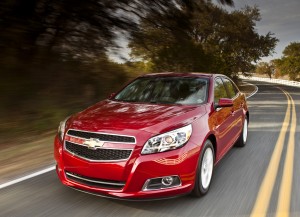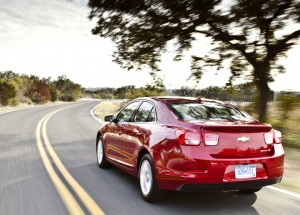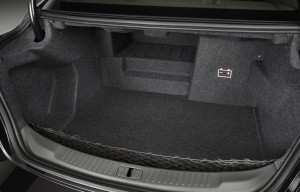Fuel economy requirements are about to increase and carmakers are going to be scrambling to find ways to squeeze more miles out of a gallon of gas. And to do it, automakers are going to count on the electric motor and battery to help.
General Motors is reintroducing its “mild hybrid” system as eAssist on some Buick models and this Chevrolet Malibu, dubbed Eco. A similar system was available briefly as GM’s first hybrid system on the Saturn Vue.
While most “full hybrids” have an electric motor sandwiched in between the gas engine and transmission, eAssist replaces a typical car’s alternator with a larger generator that is rated at 15 kW and provides up to 15 extra horsepower. The motor turns the engine crank by a thick belt. The system is can briefly – very briefly – propel the car until the gas engine restarts when the car is stopped. It can also give the engine a little extra oomph for the drivetrain while cruising or for passing slower traffic.
The result? Fuel mileage increases from 22 mpg city and 33 highway to 25/37, neatly bridging the gap between regular gas-only mid-sizers and full hybrids such as the Kia Optima. We saw 29 mpg in a mix of freeways and rural two-lanes. Contrast that with mileage of a Buick Verano, tested the week before. With the same 2.4-liter four cylinder engine, but no eAssist, the smaller Verano averaged 26 mpg.
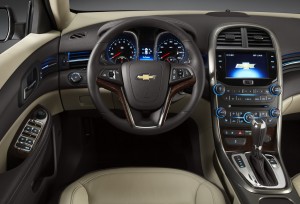
When the previous-generation Chevrolet Malibu hit the market as a 2008 model, it's interior was a revelation. The new version improves on that.
Of course, eAssist comes with an upfront cost. The Eco model starts at $25,995, including destination. Direct comparisons aren’t really possible because GM isn’t yet building non-Eco versions of the updated Malibu, which gets a refresh for 2013.
But the current car starts at $22,870. A better comparison would be the 1LT, which starts at $24,230 but has equipment that is similar to the base Eco. So figure on spending about $1,600 extra for eAssist.
This nicely loaded test car, called a 2SA in Chevrolet’s bizarre model nomenclature, starts at $26,845. Add leather ($1,300), Crystal Red paint ($325) and a $150 option called cocoa fashion trim, bringing the total to $29,380.
About those updates. GM’s designers freshened the exterior styling with more creases, more detail and a shapely new trunk. It’s still doesn’t have the style of a Hyundai Sonata, but it’s still a definite step forward.
The updates continue inside where the designers improved what was, when it was introduced, a true revelation for your basic midsize sedan. It keeps the twin-cockpit, two-color theme of the old car, but the shapes are new, as is new light accent feature, a thin spear of light reaching from the door pull on the driver’s door to the one on the passenger side. During the day, the light spear appears as a think line of chrome.
Like other hybrids, eAssist uses a battery to store power gleaned from the car’s regenerative braking system. In the case of the Eco, it’s a 0.5-kWh lithium-ion unit. The earliest regenerative systems felt artificial, but the Malibu Eco shows how far engineers have come in improving them. The Malibu’s brakes feel completely natural.
Most hybrid sedans sacrifice a bit of trunk space and the pass through that extends cargo space into the passenger compartment, when needed. Because the Malibu Eco’s battery is smaller, the designers will able to maintain a part of the useful pass-through. The battery reduces the trunk by 2 cubic feet to 14.
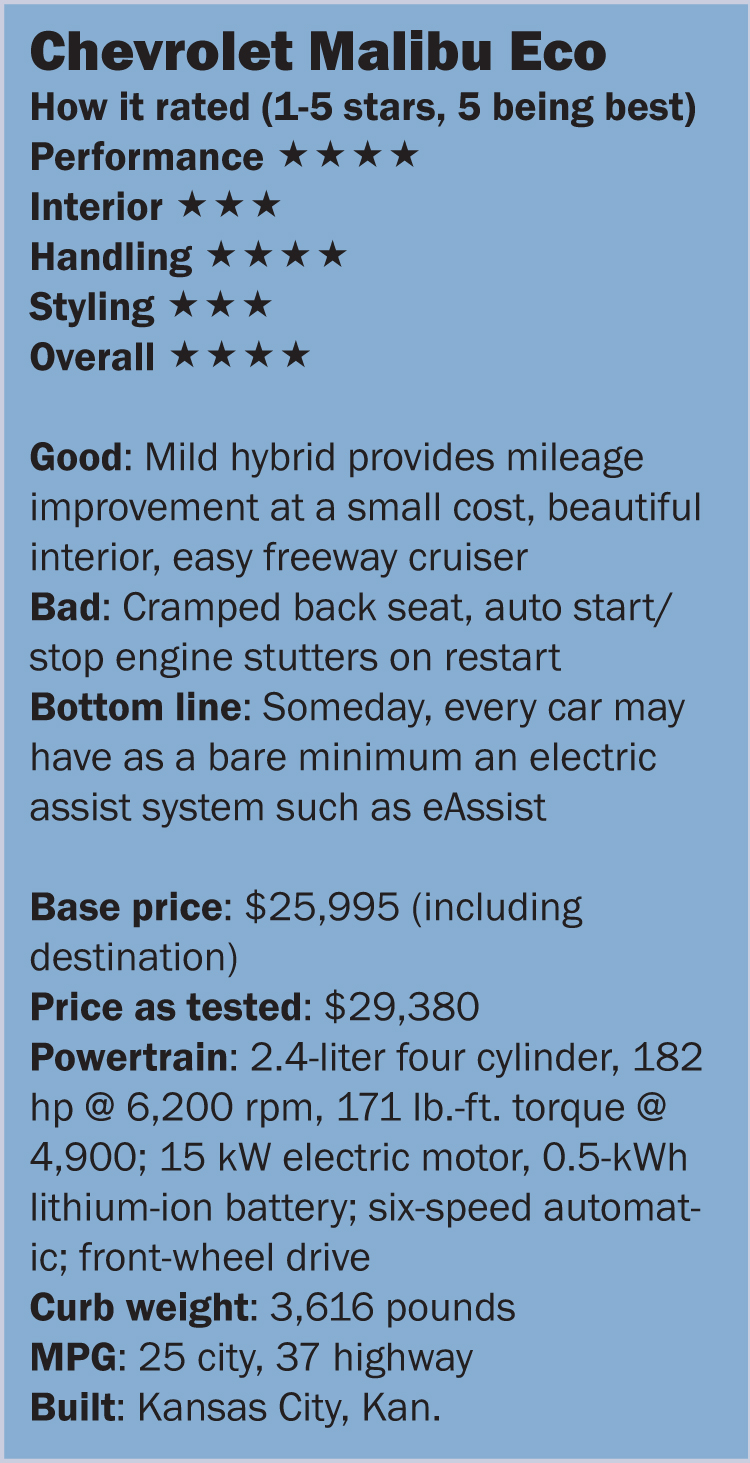 But like many GM cars, the Malibu’s rear seat is seriously deficient. Headroom is good, but anyone with knees will complain and ask those in front to move forward. There should be more space back there.
But like many GM cars, the Malibu’s rear seat is seriously deficient. Headroom is good, but anyone with knees will complain and ask those in front to move forward. There should be more space back there.
The car handles well. No one will ever describe it as sporty, but the suspension is well controlled and it steers well.
One demerit is the way the engine stutters to life after stopping. Auto stop/start is becoming more common, but others do a better job of smoothing the transition.
The new Malibu is a great update on what was already a good car. Eco seems to make a lot of sense as a less-expensive alternative to a full hybrid system.

